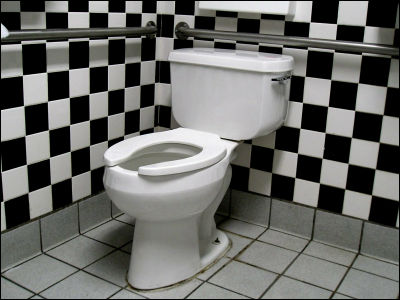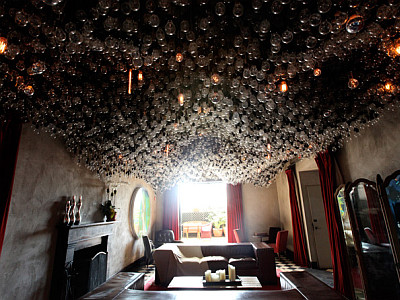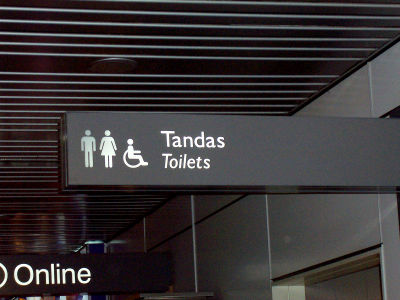How do you balance privacy and convenience in a bathroom with two doors?

When you encounter any problems, an unexpected and unexpected way may lead to the resolution of the situation. Novelist Aurek Nebara Lee says that "thinking of a case study of a hotel exemplified by Mr. Henry Petrosky, who is a professor of civil engineering at Duke University" may be a hint to the problem I am talking.
The hotel bathroom puzzle | Alec Nevala-Lee
https://nevalalee.wordpress.com/2015/11/27/the-hotel-bathroom-puzzle/
The hotel "L'Hotel Louis XIV" which was in Quebec's eastern Canada burned down in the fire in April 1966 had a distinctive bathroom. The bathroom had one door on each side and was designed to be able to enter from two places.

This design itself is a fact that exists in families that need to share a bathroom, and it is by no means rare. However, in the case of this hotel, as the different rooms were designed to share the bathroom, the owner says, "While a person using one room is using a toilet or a bath, the other room How to make people not able to enter the room "had to think about.
One solution is to "lock the door with the key locked". However, there was a problem with this method, and I knew that problems would arise by keying both doors. That is, "The person who uses the bathroom locks both doors without fail almost to prevent people in the next room from coming in right after entering the room." And, many of the people who finished using the bathroom left the key without forgetting to unlock the door that follows the next room, and an accident occurred in the room where someone in the next room can not use the bathroom I heard he did.

Even if one door is locked at a general house, you can use the bathroom if you go around to the open door by detouring. However, when getting up at this hotel, the guests in both rooms are asked for troublesome responses, causing a problem of feeling distress.
So, what kind of solution is desirable? One idea is to introduce a system that informs the user of the bathroom that "the door is locked" by sounding an alarm. Of course, if such a system is introduced, it is possible to eliminate forgetting to unlock it, but at the same time there is a possibility of making guests who use the bathroom uncomfortable.
So the owner of L'Hotel Louis XIV decided to adopt ingenious ideas. Instead of losing the keys of the door it is "to fix the two door knobs with a belt with hooks". Since the belt has a length that can fix the door knobs on both sides, if you hook the belt to the doorknobs on both sides, you will not be able to open the door from either room.

Guests who wanted to use the bathroom and entered the room will first hook this belt to the door knob. Then you can prevent unexpected entrance because you can not open the door from outside while using. And by removing the belt when leaving the bathroom after use, both doors can be emptied from either side, so troubles like when using a key can be avoided systematically.
Nevara Lee says, "This case study should be kept in mind by many people." In the case of this example, many people tend to take time to reach a real answer, trying to lead a solution from the answer presented at the beginning of "lock the door". Mr. Nebara Lee says, "Rather than thinking about the door lock presented at the beginning, it is a fundamental problem," When a person using one room uses a toilet or a bath, how can the other room Would you like to prevent people from entering the room? "To increase the possibility of early problem solving."
Related Posts:
in Note, Posted by darkhorse_log







